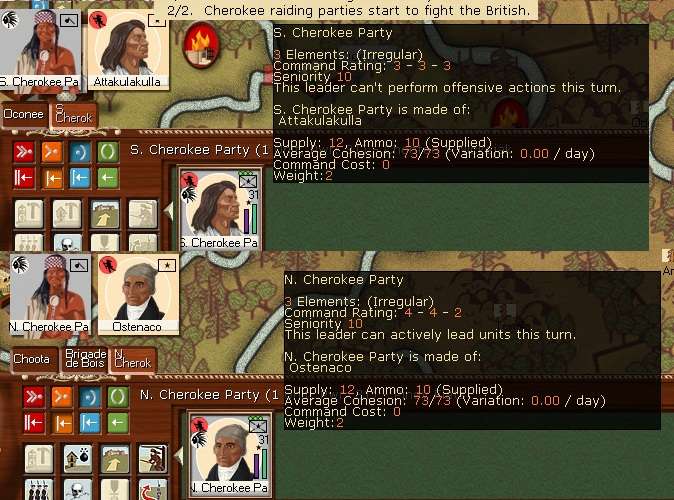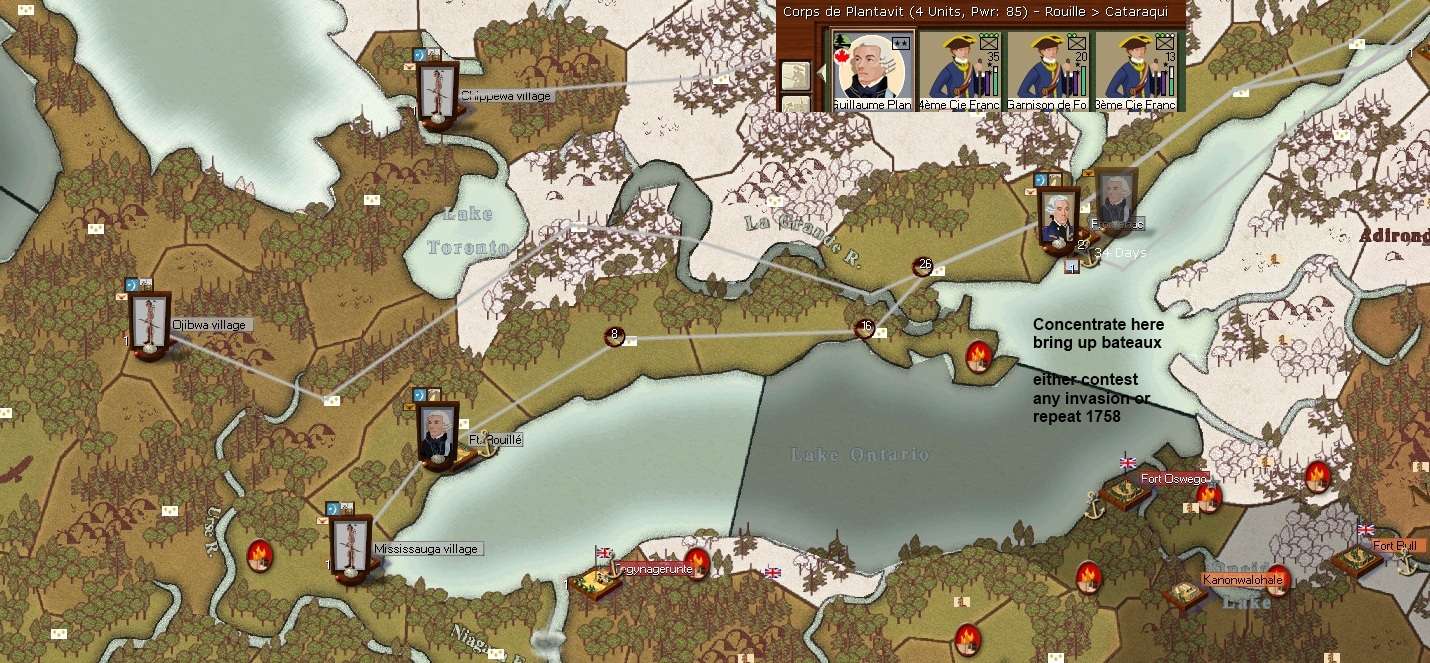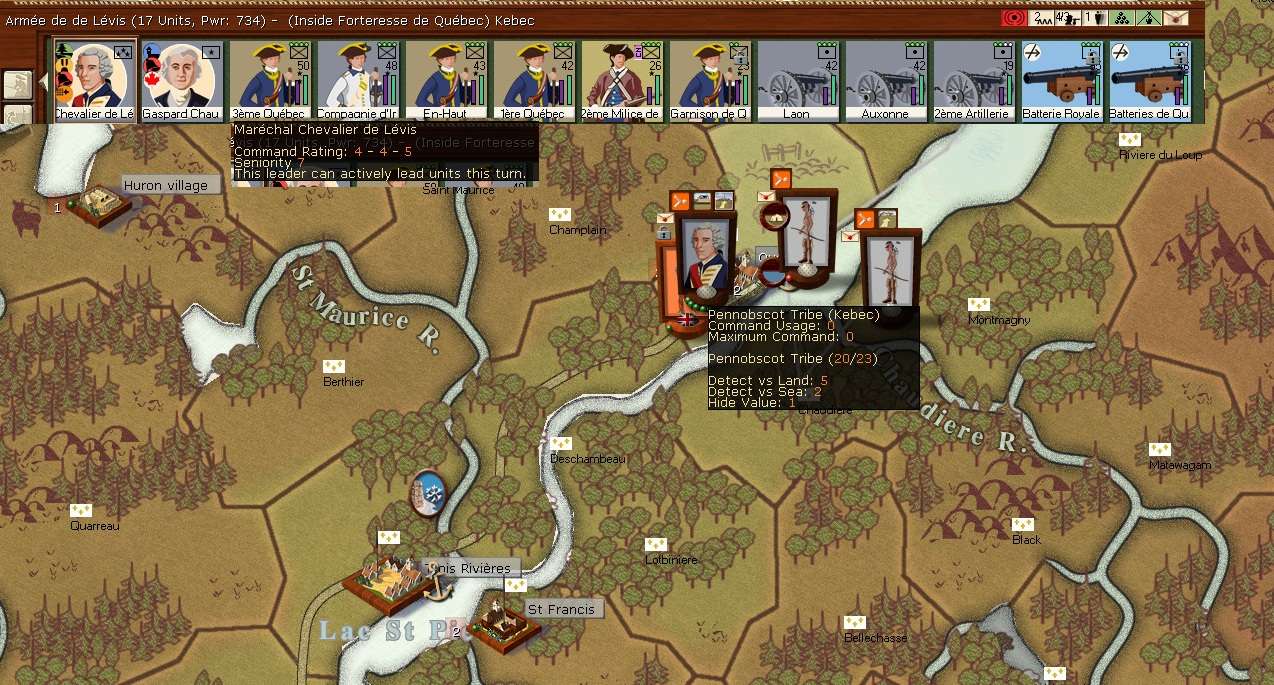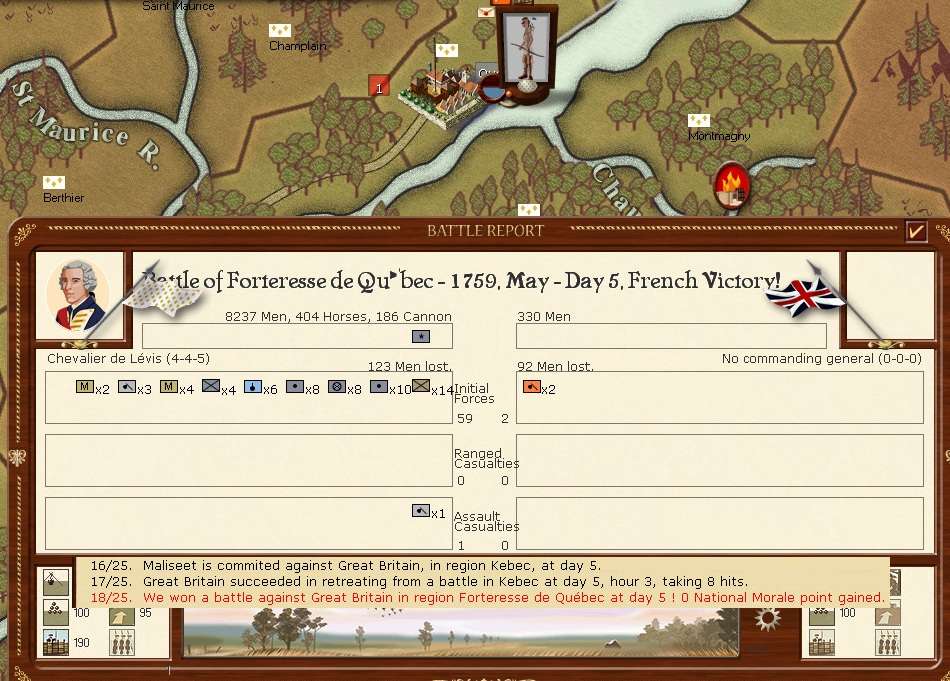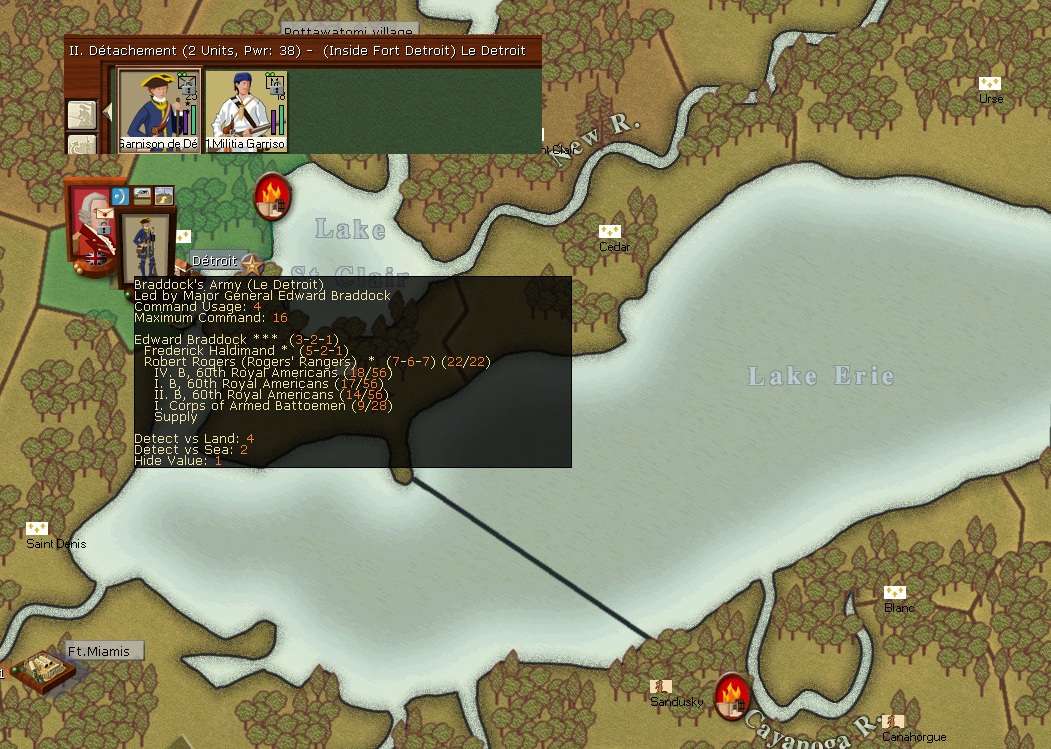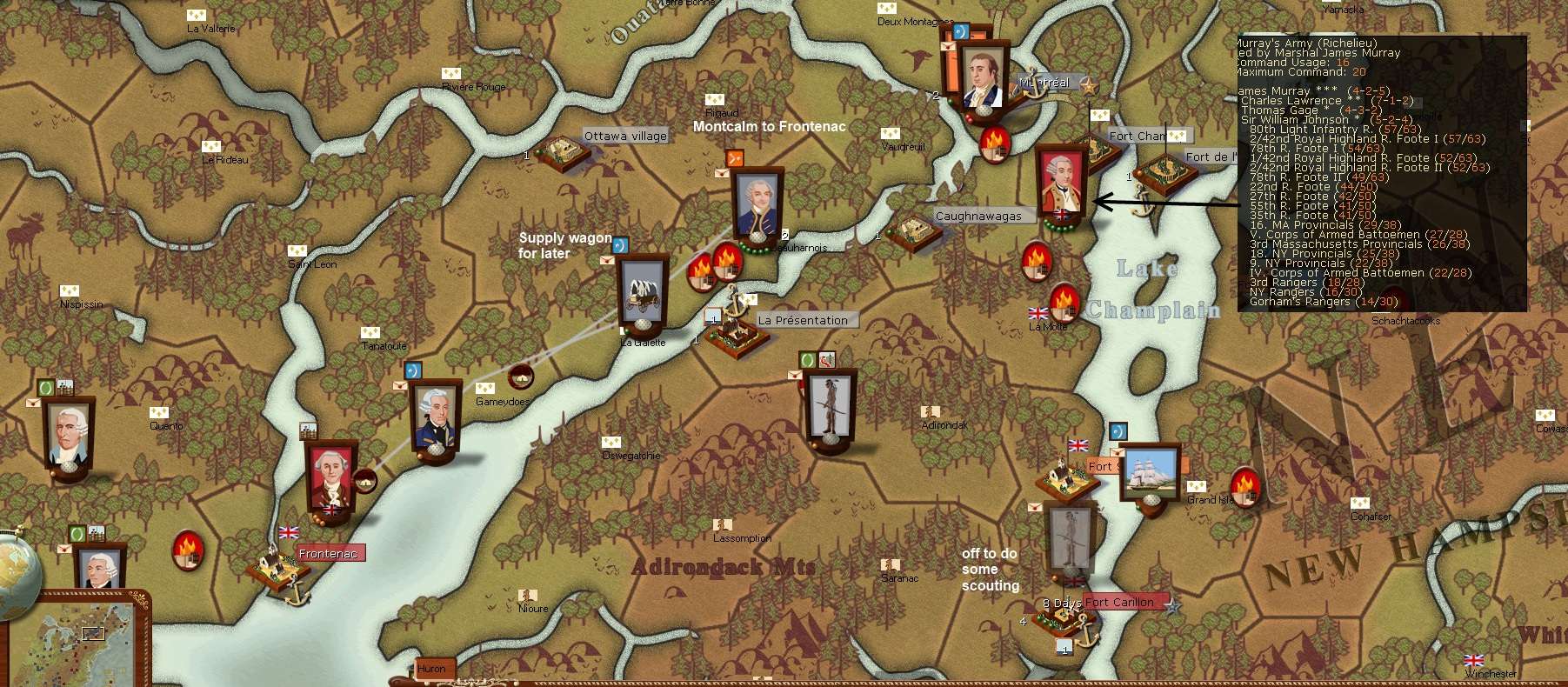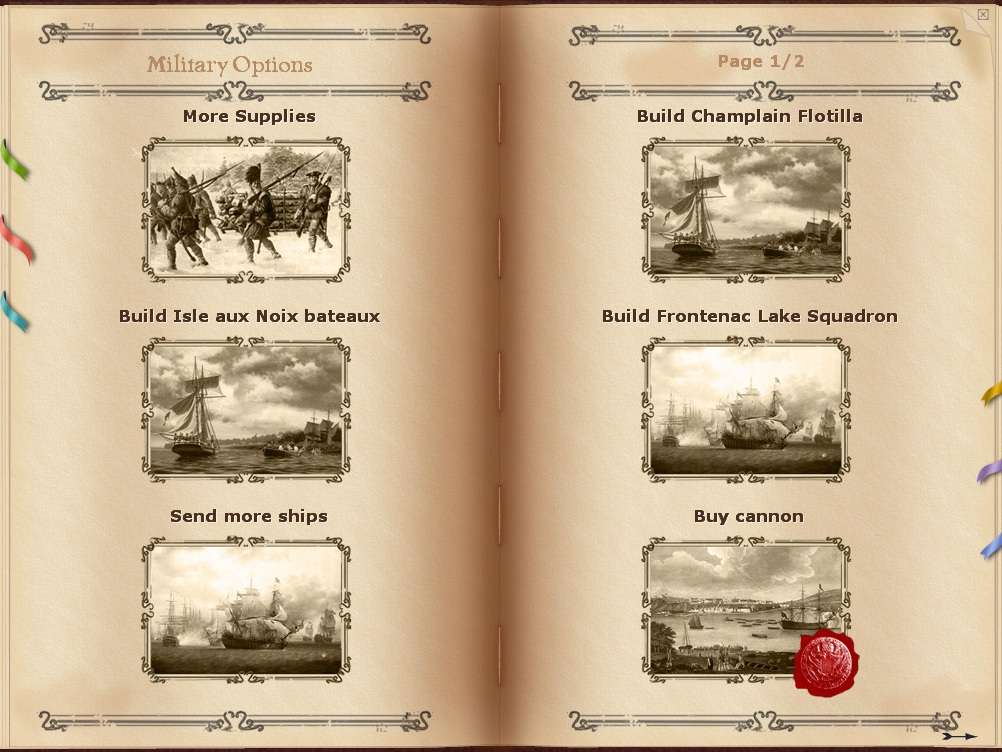July 1759, Battles and English crimes
Given that Narwhal can't defend his actions, I'll merely stick to relating actual events. But he really did have a thing about killing and wounding my officers, to the point where you have to ... well you really have to wonder.
Anyway, July opens badly with a simultaneous English assault at the north of Lake Champlain, opening the door to Mont Royal.
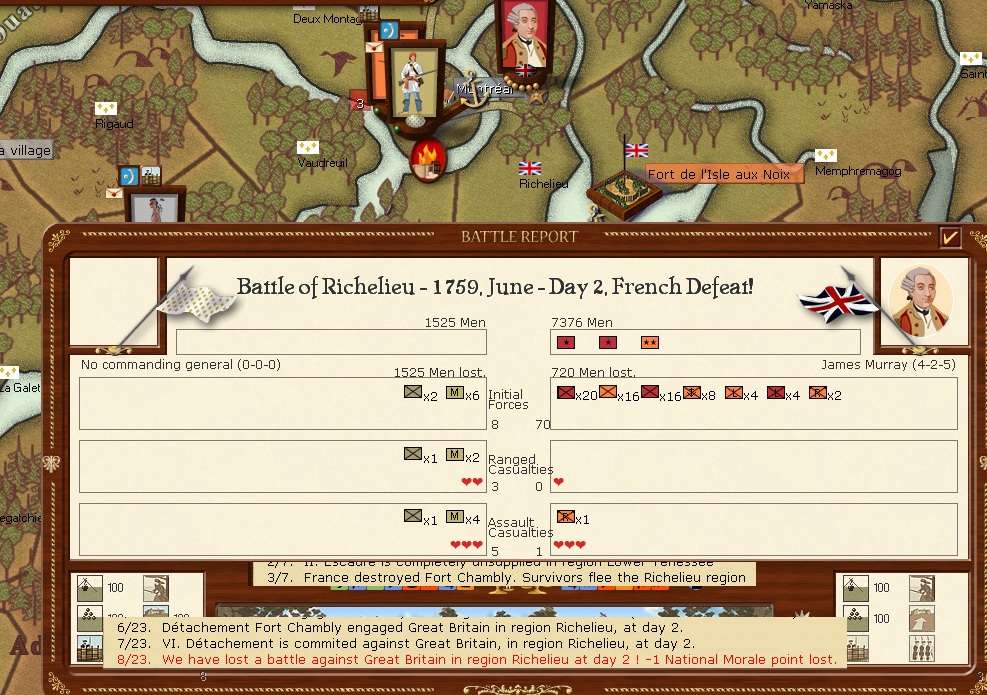
That was expected, but I'd over-garrisoned given the strength of the English force, so not only do I lose a lot of men, but also a National Morale (NM point). Still my standard trick of burning it down won't make life easier for Narwhal, though its not as disruptive as my stunts over on Lake Eire.
As Narwhal said in an earlier post, NM is less critical in WiA than in RoP - it also doesn't fluctuate much. So the losses/gains are a bit mheh ... whereas in RoP after a couple of bad defeats, low NM would really harm your combat capacity for quite a while.
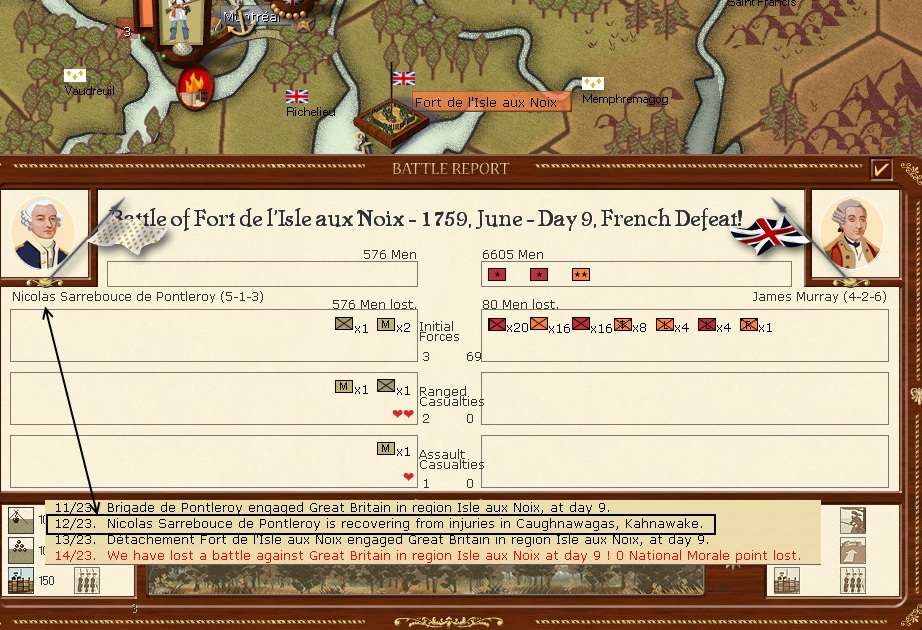
That was less expected - I presume they came by boat? Note the targetting of one of my noble officers as he led the heroic defense.
In combination, that gives Narwhal Lake Champlain and a real threat to Mont Royal.
But ... all is not lost
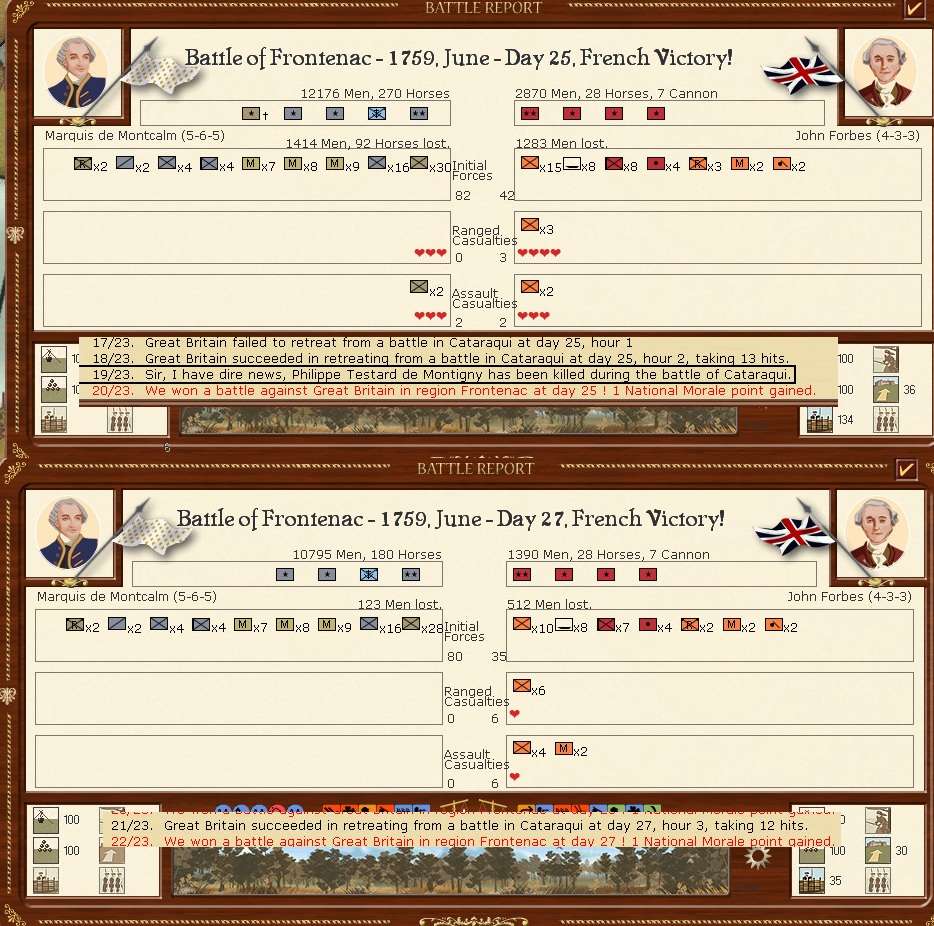
hah, that I enjoyed (sorry), Montcalm steamed into the British at Frontenac and gave them a right beating ... they end the turn scuttling off to the wilderness to the north where they will be abandoned by their officers.
The bad news is the death of one of my generals as I need all the Command Points I can muster to keep Montcalm's mobile force properly led.

So here's the wider position around Lake Ontario. As my bateaux were off-shore, Narwhal's fleet didn't escape so apart from whatever he has at the old Fort Niagara, I now have naval control of the lake.
And I have options - a raid on Fort Oswego seems a good idea as I have a decent sized force that wasn't engaged in the last round of battles. However, I have a problem with Montcalm's force. As you can see its running down on supply and needs to rest before it fights again. It can pick up supply from the wagons I sent earlier but its a bit tense as they need to get back to Mont Royal as the nearest depot.
Now what I should have done was to convert some of those nice English supplied bateaux into a depot at Frontenac, which would have helped an awful lot. Then Montcalm might have been able to operate on Narwhal's line of communication south of Mont Royal.
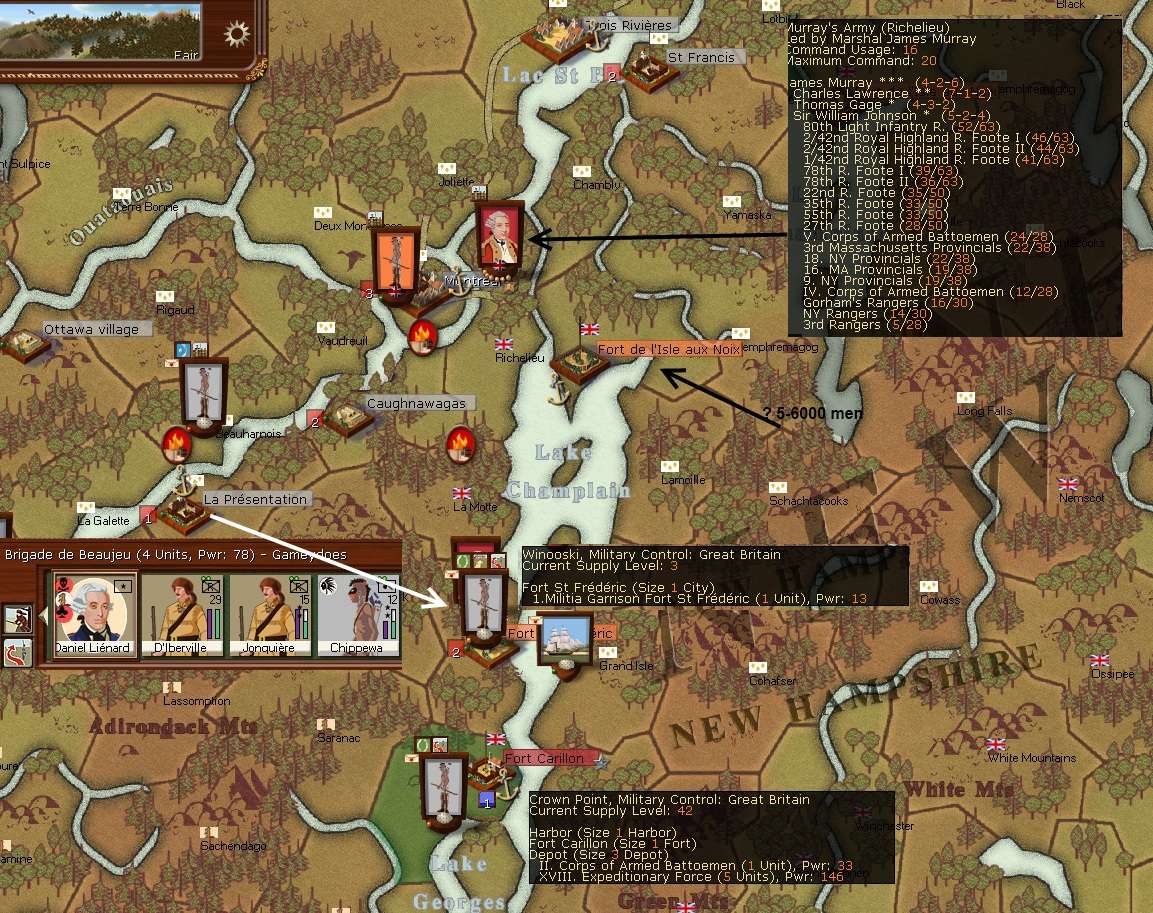
And heres the position around Lake Champlain. So there are 2 large English armies in the north - my garrison at Mont Royal matches each of them individually so I'm not too worried at this stage (except Montcalm needs access to croissants pretty soon).
I've scouted out the fort garrisons and have a small force of Couriers and Indians at La Presentation. Its a gamble but I give them all out assault orders and send them to attack Fort St Frederick - it it pays off (& the current defense is weak) that will put a real spoke in Narwhal's ability to get all those units north of Champlain home before winter. If I destroy 2 columns this summer then things look very much brighter.
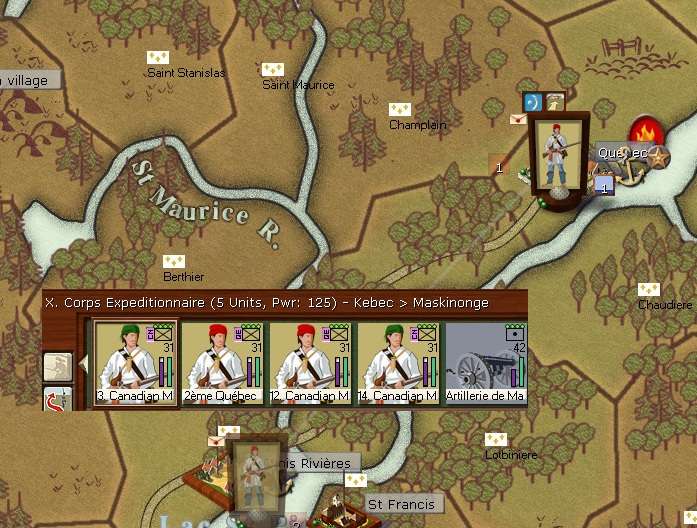
Since Quebec has yet to be threatened, I slightly weaken the defenses and create a garrison at those towns between Mont Royal and Quebec in case Narwhal lunges north and tries to find a bolt hole for winter (he ends up doing this when I remove the garrison ... but not in 1759).
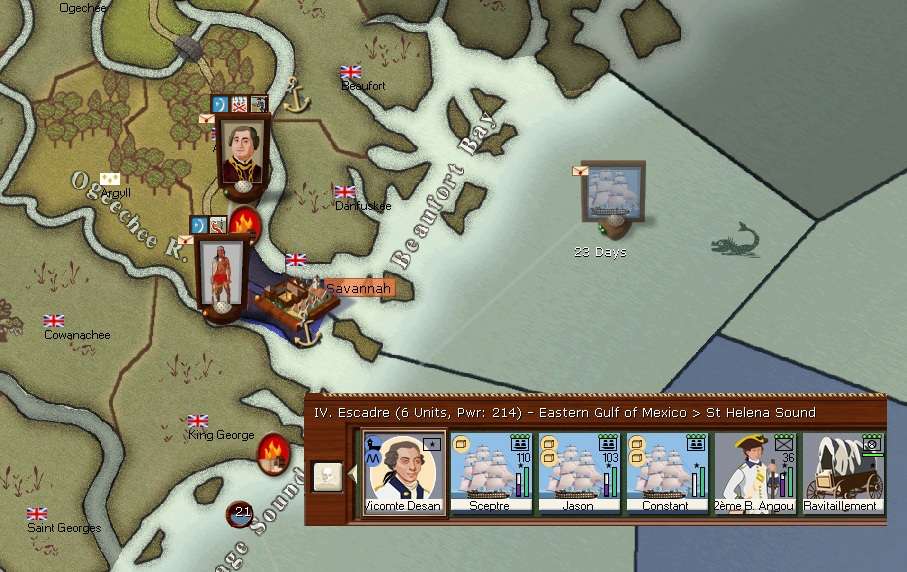
And, war returns to Savannah, a nice group of Couriers and Indians await the arrival of the regulars from the West Indies and its party time again ...
 enjoy the holiday and good luck with the exam!
enjoy the holiday and good luck with the exam!


